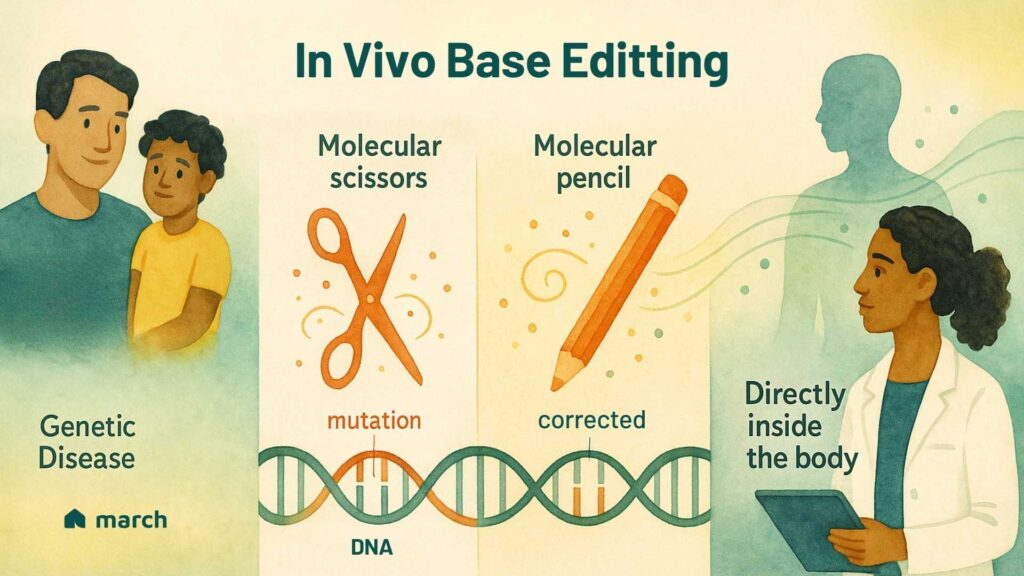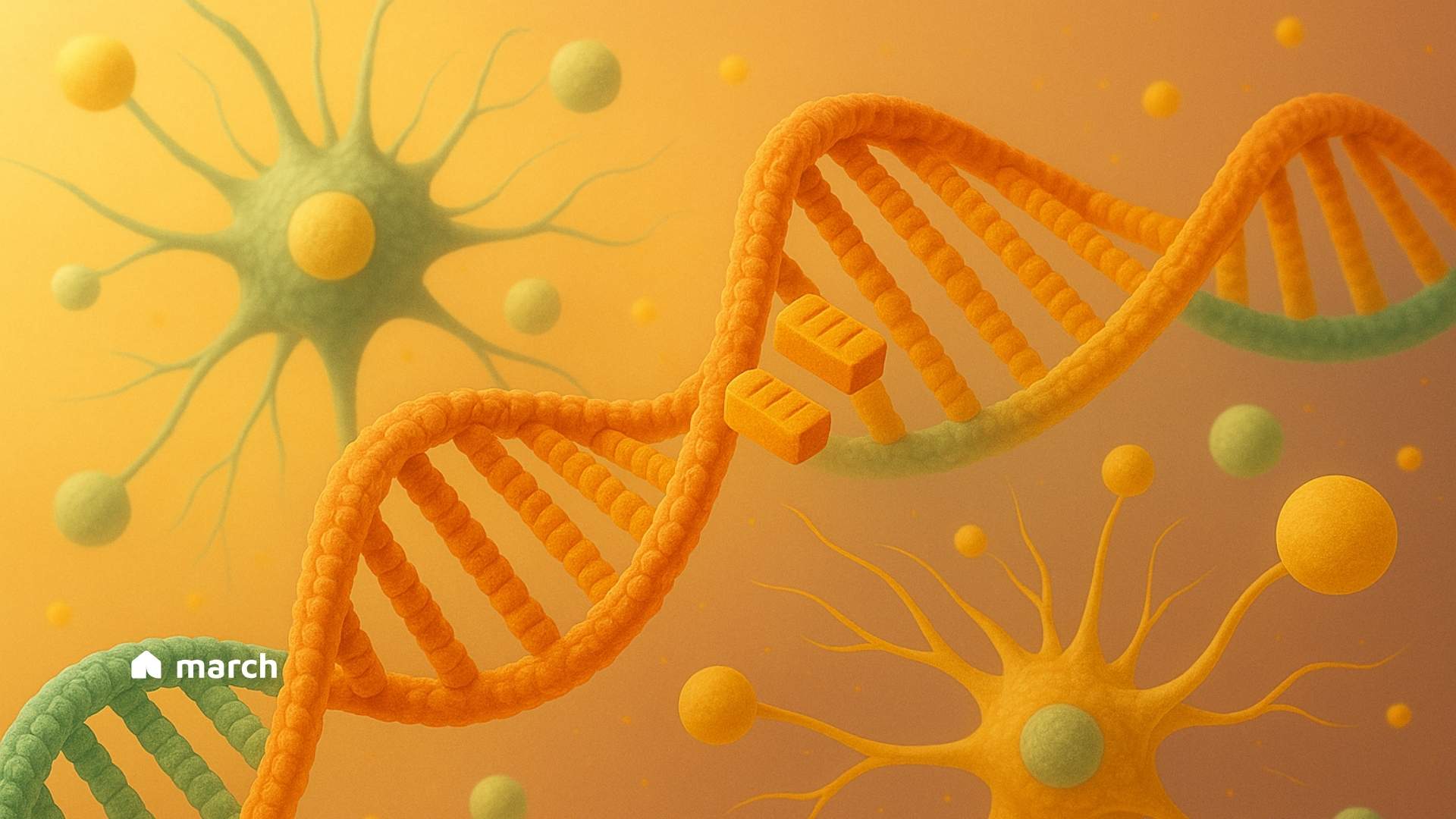For so many families in our community, a journey with a rare genetic disease starts with a single, tiny error in the body’s instruction manual, our DNA. This one “typo” can change everything, and for decades, treatments have focused on managing symptoms rather than fixing the source of the problem. But today, we want to share a development that represents a new chapter of hope, a story of incredible scientific progress that speaks directly to the heart of these conditions.
We’re hearing more about a groundbreaking technology called in vivo base editing. We know these scientific terms can feel intimidating, so let’s break it down together. Think of earlier gene editing tools, like CRISPR-Cas9, as “molecular scissors” that cut DNA to make a change. While powerful, this cutting can be disruptive. Base editing, on the other hand, is more like a “molecular pencil.”It’s designed to be more precise, erasing and rewriting a single incorrect letter in the DNA code without making a major cut. It’s a gentler, more targeted approach to correcting the original typo.

What makes this even more remarkable is the “in vivo” part, which simply means the editing happens directly inside the body. Scientists are developing special delivery vehicles—think of them as microscopic packages—that can carry the “genetic pencil” through the bloodstream to the specific cells that need correcting. Once there, it can perform its job: fixing the error in the DNA’s instruction book so the cell can start working correctly.
This isn’t just a concept in a lab. We’ve seen the very first case where this therapy was used to treat a baby with a life-threatening rare liver disease, offering real, tangible hope where there was once profound uncertainty. This progress is truly inspiring.
At the same time, we walk this path with you, holding both hope and honesty. This technology is still in its earliest days. Researchers are working hard to solve big challenges, like ensuring the “delivery packages” can reach every part of the body and confirming the long-term safety and effects of these changes. There are no miracle cures overnight, and the road ahead is long.
But for our community, this represents a monumental step forward. It shows that science is relentlessly marching on, driven by the needs of families like ours. It brings the possibility of one-day treatments that address the root cause of a disease, not just its symptoms. As we watch these new frontiers unfold, we will continue to learn, share, and support one another. Your journey matters, and on this path of discovery, you are not alone.
For a more in-depth look, tune into our new podcast episode, where we discuss the fascinating history and science of this new treatment.
Sources:
BioTechniques. (2017, October 26). Molecular Pencils Rewrite Bases.
Frontiers. (2022, November 23). Breaking genetic shackles: The advance of base editing in genetic disorder treatment.
Gènéthique. (2017, November 3). ABE (adenine base editor): a “base editor” to complete the CRISPR tool kit.
BioTechniques. (2020, July 31). CRISPR-Cas9 base editor caught in the act by Cryo-EM.
HHMI. (2020, June 12). Precision Genome Editing Enters the Modern Era.
Synthego. (n.d.). LNP-mediated delivery of CRISPR RNP for wide-spread in vivo genome editing in mouse cornea. Retrieved July 7, 2025.
National Library of Medicine (PMC). (2023, July 17). A base editing strategy using mRNA-LNPs for in vivo correction of the most frequent phenylketonuria variant.
National Library of Medicine (PMC). (2024, March 4). Targeted nonviral delivery of genome editors in vivo.
PET. (2025, May 19). CRISPR base editing treats baby born with rare metabolic disease.
National Institutes of Health (NIH). (2025, May 15). Infant with rare, incurable disease is first to successfully receive personalized gene therapy treatment.
National Library of Medicine (PMC). (2022, August 23). CRISPR-based therapeutics: current challenges and future applications.
National Library of Medicine (PMC). (2020, March 18). Current Status and Challenges of DNA Base Editing Tools.
